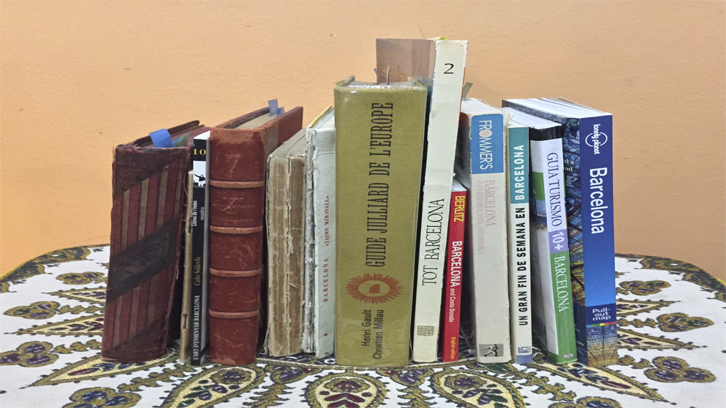The Evolution of Tourism Destination Image through Travel Guidebooks: the case of Barcelona

The history of travel guidebooks does not begin with Pausanias, but his 10-volume collection regarding how to visit Greece in the 2nd century is the oldest publication that has survived whose goal was to explain the destination to travellers. Since then, those books have been the best companions to those people who wanted to know their next destination before leaving the house. Modern travel guidebooks were written in the 1830s by John Murray in London and Karl Baedeker in Koblenz and Leipzig. From these two handbooks, tourists all over the world were able to have a frame by which define the limits of their trips.
Destinations have always one or several images. Those may live together in the present or may be different through the years. Some images are replaced while others are adapted. Some are created and others are organic. In short, there are as many tourism destination images as there are destinations to visit and tourists to travel. Just the same, there are many ways to evaluate them as well: postcards, travel agencies brochures, surveys with the tourists, and a lengthy etcetera. One of the least studied resources, though, is the travel guidebook and this research wants to fill this gap. In such Orwellian times of mobile apps and webpages that suggest all kinds of tourist attractions and activities in an ever-changing way and that leaves no register of past uses and meanings, the use of printed travel guidebooks is a suitable resource in order to understand how tourism destination images have changed through time.
Tourism happens in space – both the physical and the social ones. The changes in uses and meanings of that that is considered touristic can only be understood through a geographic gaze towards the territory. In the end of the 20th century, the City has changed and the urban Tourism has gained importance in the geographic studies as a phenomenon that occupies locations that were improbable to tourists before and such new experiences affect in a pungent way the images that those destinations produce.
This Thesis seeks to understand how the changes in the tourism destination image can be understood through the analysis of its travel guidebooks published through time. So, the research understands that the method of the Grounded Theory is the best tool because it allows the researcher to submerge himself in the depths of the data so that he can search for a theory that explains how the guidebook presents the destination. In order to work with such a huge quantity of data, the use of the software ATLAS.ti was important both to organize and analyze the guidebooks; also to extract and present the data; and, last but not the least, to preserve the books as pristine as they were when they were bought.
In order to carry out a Grounded Theory method, a definite destination was needed as well as its travel guidebooks. The researcher’s interest towards Barcelona was key and the research was focused in the Catalan capital’s tourism destination image through its handbooks. A total of 13 books in 5 languages and 12 publishing houses were chosen in a non-random selection. The longitudinal study analyzed 128 years of Tourism in Barcelona, from 1888 –the year of the first Universal Exposition– to 2016. Almost all decades were studied and all the big events were contemplated.
After analyzing the travel guidebooks and present their theories through texts, maps, networks, and word clouds, this Thesis was able to conclude that –even though the city has had several tourism destination images throughout these 130 years– the Barri Gòtic in Barcelona is the main image of the Ciutat Comtal since the beginning of the modern Tourism. Also, it was possible to prove that the omnipresent Antoni Gaudí (and his works) in the city’s touristic imagery is relatively new, more specifically after the 1992 Olympic Games. Finally, this research was also able to demonstrate that travel guidebooks are a reliable source of information about a destination’s image and that this model can be used in other tourism destinations.
References
PhD Thesis. The Evolution of Tourism Destination Image through Travel Guidebooks – The Case of Barcelona. Raul Suhett de Morais. Defended in the doctoral program in Geography. Directed by Dra. Gemma Cànoves.


